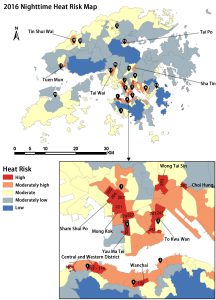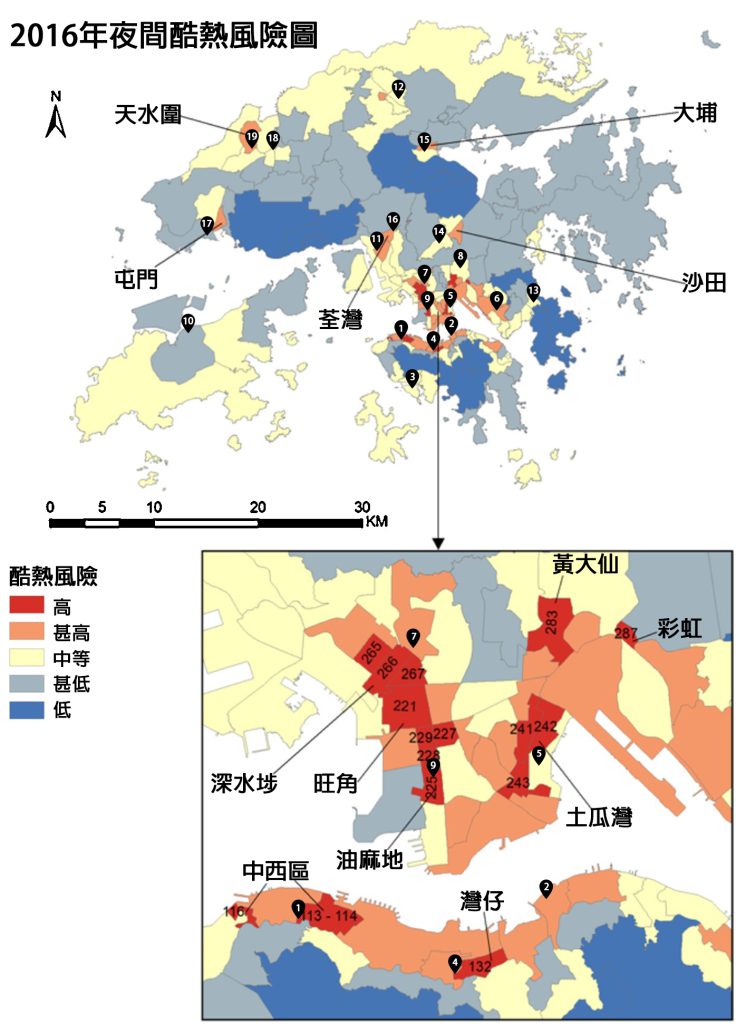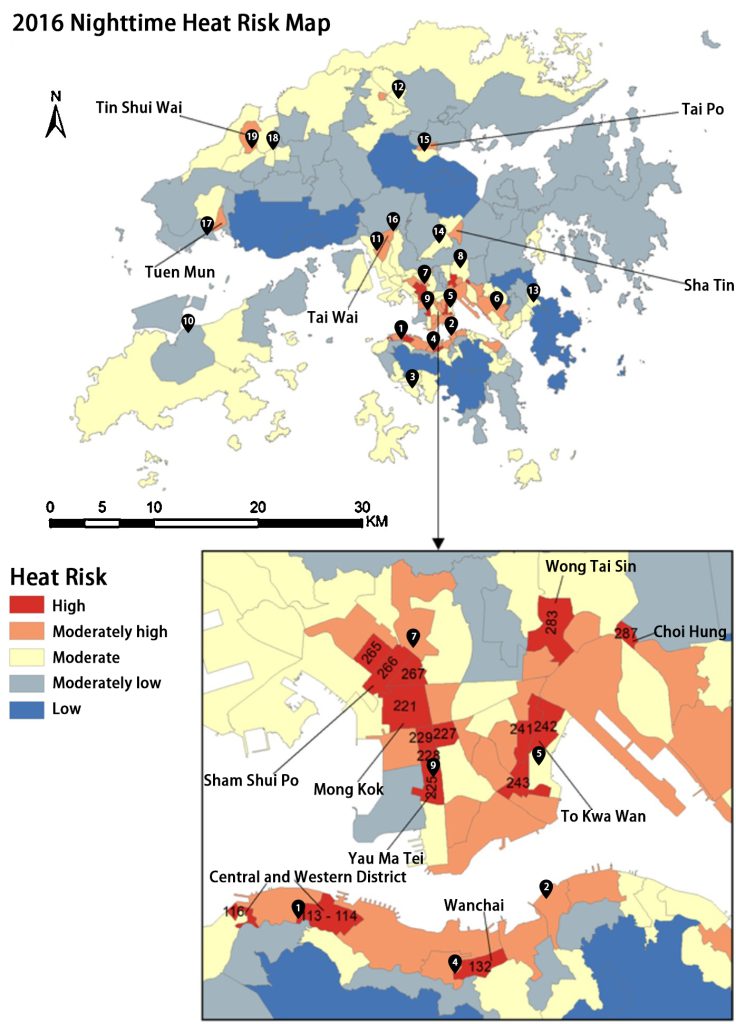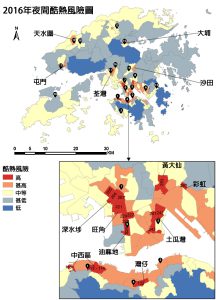CUHK
News Centre
CUHK study finds extreme hot weather will definitely increase in the future
Long-term planning for cooling facilities and public spaces is required
Hong Kong has been experiencing hotter summers and more scorching days in recent years due to climate change and urbanisation. According to collaborative research by The Chinese University of Hong Kong (CUHK) and other universities, it is predicted that extreme hot weather in Hong Kong will certainly increase in the future, with a rise in temperature and a longer duration. The research team proposes long-term planning for cooling facilities in order to alleviate the health impacts on citizens of extreme heat.
Hong Kong Observatory records show that, for the past ten years (2012–21), the average annual number of very hot days was 34 and hot nights was 36. According to the latest predictions from the research team, in a scenario of no improvement in greenhouse gas emissions, the number of very hot days and hot nights will be approximately 126 and 136 respectively by the late 21st century. This means that extreme hot weather will occur almost daily from May to August, and might also occur in April and September. In other words, the extreme hot weather of this year is just the beginning; extreme heat will occur more frequently, with higher temperatures and longer periods of duration.
Sham Shui Po, Yau Ma Tei, Mong Kok and Choi Hung are the epicentres in both daytime and nighttime, with other high-risk spots emerging at night
The research team announced in 2019 the health impacts of extreme hot weather, to which older people and patients with long-term illnesses are most vulnerable. Dr Ren Chao, the Honorary Research Fellow of CUHK Institute of Future Cities and Associate Professor of the University of Hong Kong’s Faculty of Architecture, produced heat risk maps for both daytime and nighttime using the average annual cumulative hours of very hot days and nights in different Hong Kong districts, as well as other demo-socioeconomic factors, such as age, household income, household size and level of education.
From 2006 to 2016, the hot spots of extreme heat in daytime were Sham Shui Po, Yau Ma Tei, Mong Kok and Choi Hung. At nighttime, the hot spots were Sham Shui Po, Yau Ma Tei, Mong Kok, Choi Hung, Wong Tai Sin, To Kwa Wan, Wan Chai and parts of Central and Western District. Tai Po, Tsuen Wan, Sha Tin, Tuen Mun and Tin Shui Wai were moderately high risk at night. The research team hopes that the findings of these heat risk maps can assist the government and charitable organisations in formulating supportive and emergency services during extreme hot weather.
Existing heat shelters are not sufficient for future; better long-term planning for cooling facilities is required
As extreme hot weather becomes more severe, cooling facilities in the community will become more important to help protect citizens from heat stress and heat-related illnesses. Currently, when the very hot weather warning is still in effect at 4 pm, the government will open 19 temporary night heat shelters for people in need from 10:30 pm to 8 am the next day. However, the people they are aimed at often do not use these shelters, for a variety of reasons: 1) they do not know the locations; 2) the locations are remote and inconvenient for elderly people or those with limited mobility; 3) the environment is not suitable or appropriate, including security issues, with homeless people worrying about losing their belongings.
The principal coordinator of this research project, CUHK’s Yao Ling-Sun Professor of Architecture Professor Edward Ng pointed out that, “With respect to the heat risk maps and the locations of the 19 night heat shelters, we can foresee that the existing support services for nighttime will not be sufficient in the future in terms of distribution, scope and numbers”. He suggested that the government should consider setting up more night heat shelters at nighttime hot spots where a large number of elderly, low-income people and homeless people live, such as Sham Shui Po, Yau Ma Tei and To Kwa Wan. He added that it is necessary to improve the environment, facilities and management of the heat shelters so that they are convenient for people in need, encouraging them to stay at the shelters in extreme hot weather.
Professor Ng emphasised the need for improvement and optimisation of the design of parks and public spaces to provide outdoor cooling facilities, although citizens may also go to shopping malls and other public facilities with air conditioning. If there were outdoor spaces with better-shaded environments, elderly people and those living in subdivided flats or without air conditioners at home would have more options. They would still be able to exercise or enjoy the greenery outdoors during extreme hot weather, which would also help to improve their mental health. In the meantime, the government and charitable organisations should consider creating cool spots in popular community spaces by setting up fountains, wet play areas and misting sprays to reduce the ambient temperature of the surrounding environment.

The picture shows the nighttime heat risk map in 2016 and the locations of the 19 night heat shelters. It shows that some hot spots with a high risk at nighttime do not have any shelters, such as Choi Hung and To Kwa Wan; and that night heat shelters are not set up in the neediest Large Territory Planning Units in Sha Tin, Tai Po, Tuen Mun or North District.








